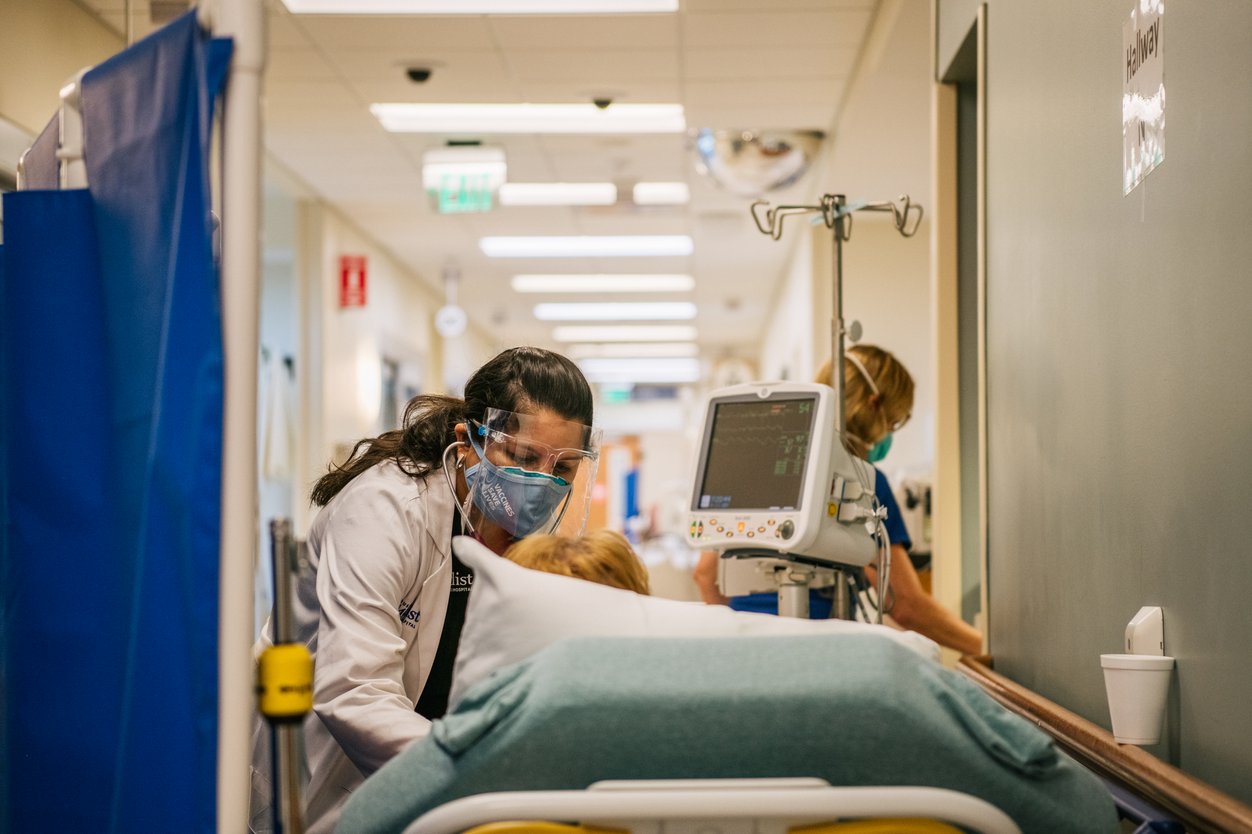Hospitals
The RACs that hospitals actually love

Brandon Bell / Getty Images
The acronym “RAC” is very triggering in health care. Hospitals and doctors loathe RACs, or “recovery audit contractors,” which are private entities authorized by Medicare to claw back overpayments from providers.
But there’s another type of RAC — called a “regional advisory council” — that has been a boon to hospitals. Those RACs have provided many hospitals with traveling nurses and other temporary staff on the taxpayers’ dime.
One prominent example: Christus Health, the large not-for-profit hospital system with facilities in Texas, New Mexico, and Louisiana, received $95.4 million worth of travel nurses and other medical staff at no cost to Christus through those quasi-governmental regional advisory councils.
This free staffing highlights another instance during the pandemic in which hospitals have been propped up financially — largely through public subsidies — and contradicts industry messaging that all hospitals are on the brink of collapse. Read more about these RACs.
LABOR
‘Take this job and shove it’
Roughly 2.9% of health care workers quit their jobs in November, equating to about 600,000 resignations, according to new data from the Bureau of Labor Statistics. That’s the second-highest quit rate in recent health care history, only behind the 3.1% rate in November 2021. (h/t Paul Hughes-Cromwick, a health care researcher, for pointing out the trend.)
Burnout from caring for Covid-19 patients, rigorous work schedules, and stagnant or low wages continues to push many hospital nurses, technicians, nursing home staff, and others to switch to other health care settings — or leave the profession completely. But health care employers are still desperate for people to care for patients, which is giving employees leverage to demand higher paychecks.
The average hospital employee made $40 per hour this past November, up from $34 per hour before the pandemic in November 2019, according to BLS. But people who work in physician offices continue to make more: over $46 per hour as of November. Those working in outpatient centers are making about $36 per hour, up from about $31 before the pandemic. People who work in nursing homes and residential care facilities are still making only $23.65 per hour, up from a little over $19 per hour in November 2019.
physicians
For hips and knees, practice, please
Good news for those who subscribe to Malcolm Gladwell’s “10,000-hour rule”: A new study underscores the importance of repetition in joint replacement surgeries, my colleague Tara Bannow reports.
Using claims data from people who get their health insurance from their jobs, the research arm of analytics company Clarify Health waded through 180,000 hip and knee replacements. The results reinforce how surgeons who do a lot of these procedures have better quality scores and lower readmission rates — and they even have lower costs.
“It’s just human nature: We need practice,” The Leapfrog Group CEO Leah Binder, who was not involved in the study, told Tara.
Read Tara’s story for more details about Clarify Health’s study and how Zeke Emanuel thinks this data should be used. One thing the study doesn’t answer: determining how many of those joint replacements were needed in the first place.